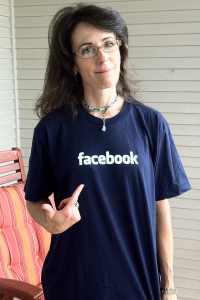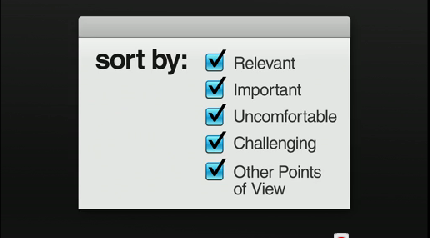[Xposted in course blog DIY 499.]
Class Thursday Nov. 3rd, a discussion of Bennett and Mousli’s Seeing L.A., A Different Look at a Different City and Baudrilliard’s Simulacra and Simulation, set us up for the two final assignments of our semester in COMM 499 at the University of Southern California’s Annenberg School. We’re moving from application of hyperlocal to building a conceptual understanding of how meaning gets produced. This recursive loop between build and analysis is the hallmark of what we do in COMM 499.
Last week we engaged in two applicative activities that advanced our knowledge of the hyperlocal. We launched DigiToolSC, our app that helps students in our immediate community find courses that let them work with digital tools.
Later that morning 10/27, we walked across our campus pulling on our phones–or trying to pull–the polyphonous stories of L.A. Flood, a fictional flood simulation depicted in narratives hyperlocated to specific sites at USC, which we accessed via QR codes on stickers. There was also a Twitterfiction playing out in six days with more than seventy characters authored anonymously, identified only by their Twitter handles. We learned important lessons about UI [user interface] and UX [user experience]: 1) Content has to load quickly. Nikki observed that each LAF narrative ought to have a unique QR code to reduce load time. 2) Encountering narrative in situ is perhaps less integral to L.A. Flood than to some other geolocated stories because the fictional universe it depicts doesn’t jibe with the sunny, crystal-clear weather we encountered that morning as we ambled around campus. Check out this tweet from a University of Maryland student who participated in the LAF Twitterfiction. In some ways, not being in L.A. might have enabled fictive participation.
Now we move from those applications of hyperlocal to a more conceptual analysis of how hyperlocal informs two significant instantiation of social media. Our class will break into two teams of four to create close readings of:
- #OccupyLA
- L.A. as a character in USC’s brand identity
Tasks for this assignment draw together many of the skills and critical readings we’ve engaged over the course of this term. Using those readings and others will enrich the complexity of these collaborative final projects.
In class Tuesday Nov. 1, some of you said you wished to have engaged more with tools you didn’t already know during our DigiToolSC build. This assignment is your opportunity to do so. For DigiToolSC, we had a client: all students registering for spring 12 classes. We hit our deadline and delivered the app to our clients in time for spring reg.

Unlike DigiToolSC, this next assignment does not have an external client. This build is for us: learning we will present to each other.
As we discuss in class today the three essays we read in Seeing L.A. (by John Humble, Jean Michel Espitallier and D.J. Waldie), we’re going to dive into the way in which art helps us to see things freshly. In the next assignment, that means you’ll examine how communities of practice marshall images to tell stories, whether that’s the Occupy story or the USC’s deployment of L.A. to augment its brand appeal. Whether the context is political or commercial, in other words, media makers jostle us into seeing the concept freshly. This is the opposite work of a cliche. A cliche is a foregone conclusion. We have no need to see it or examine it because we already understand its properties. Occupants believe their plights have been erased, invisible to the bankers and others who have created their impoverishment. That’s why this blog We Are the 99% has been important to give face to abstractions like poverty, unemployment, blighted hopes. Some have criticized occupants for not having a set of demands. Quite the opposite. Their demand couldn’t be more obvious: LOOK. AT. THIS.
A brand needs similarly to arrest attention. Students working on this subject for the collaborative final may wish to examine USC’s representations of Los Angeles in its social media. It’s a very interesting value proposition: in an age when students can pull a lot of knowledge for free–via the Open University, iTunes U or just via YouTube–what is the role of the residential university? To my mind, the more USC builds out opportunities for students to engage in informal, extracurricular learning that CAN’T be replicated online, the stronger its case for residential learning. Consider the face-to-face engagement we experienced at the Visions and Voices afterparty on 10/27 where we hung out in the beautiful courtyard, noshed on greasy but delicious tamales and gabbbed for 90 minutes. Our class is uniquely situated to discuss the particular affordances of face-to-face and digital-born learning because we conduct class in various platforms AND face-to-face: our classroom is as much on #COMM499 and our Facebook working group as it is in our virtual classroom or ASC 223. That gives us expertise I’d like you to ruminate on in these final projects.
Homework assignment over the weekend of 11/5 and 11/6:
- Finish your 300-500 word rumination on the DigiToolSC build and post it to this blog. See particular prompt and instructions here.
- Read & view linked materials below.
- Decide which subject you want to work on.
- Decide which tools you want to work with: Photoshop, iMovie, Final Cut Pro, Audacity, Garageband, Prezi, Powerpoint, gmaps, Stroome [collaborative editing software].
- Continue daily participation in DigiToolSC social media promo campaign, as specified in this post. Remember to post all your activity to our g-spreadsheet in order to receive full credit.
When we convene on Tuesday 11/8, we’ll shape our final collaborative builds!
Here’s the work schedule for the last four weeks of class:
Week 12
11/8 Break into teams for collaborative build: USC social media brand identity or OccupyLA [30 mins]; Audacity workshop with Courtney Miller in iLab ASC 229 [60 mins].
11/10 Meet in ASC 223 f2f to work in teams designing collaborative projects. I will come in via Elluminate. For the last 30 minutes (10:20-10:50), I’ll lead discussion via Elluminate: where are you in the build? Which platforms permit the interpretation you want to make? How to allocate work fairly, and keep track of it via a g-spreadsheets? What are the relevant lenses (quantitative, theoretical) through which to view this material?
Each group should set up an FB working group page to be the meeting place where you share & aggregate materials.
Week 13
11/15 Work f2f in teams sharing & gathering assets. Are you doing the work you agreed to do for the collaboration? Have you built in challenge with tools so that you work with a new platform? KIB comes in via Elluminate.
11/17 KIB f2f with you in ASC 223. Build presentations.
Week 14
11/22 KIB f2f with you in ASC 223. Some time spent (30 mins? 45?) with iMovie workshop in prep for your individual finals.
11/24 THANKSGIVING HOLIDAY
Week 15
11/29 KIB f2f with you in ASC 223: our last time meeting f2f. Present
your interpretations of OccupyLA or USC branding to
the class.
12/1 Last meeting via Elluminate: Course review. We’ll discuss progress on your edited vlogs, which is your individual course final.
[Your individual class final remains the assignment to edit your YouTube vlogs into a statement about what you learned in social media. Keep working on that!]
Two tidbits to get you started working on either OccupyLA or USC branding. Attend to the communications strategies deployed here to convey the message. What are the media makers intending the viewer to learn from watching? Is there an alterative way of looking at the same material? (As Emily Dickinson might say: “Tell all the Truth but tell it slant—/Success in Cirrcuit lies.”)
This links to Occupy LA, the OccupyLA livestream, and, as point of contrast, this SocialLive FB mini-page for OWS.
This video “USC Trojans Love L.A.” deploys images and fantasies about USC and L.A. What is its message about a student’s decision to attend USC?










